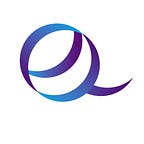Hyperledger Fabric
A suitable industrial blockchain solution
Hyperledger Fabric is a permissioned, open-source blockchain framework first implemented by the Linux Foundation in 2015. It is a standard modular, general-purpose framework for enterprise blockchain platforms offering unique identity management and access control features, making it suitable for various enterprise-grade applications and industrial solutions such as the tracking and tracing of supply chains, trade finance, loyalty rewards, clearing, and settlement of financial assets. lts modular architecture employs plug-and-play components to accommodate a wide range of use cases. Hyperledger fabric preserves data privacy on demand and offers a unique approach to a consensus that enables performance at scale.
How Hyperledger Fabric Works
Standard blockchain networks are limited and have no support system for private transactions and confidential contracts that are most vital for most businesses. Hyperledger Fabric addresses this by offering a modular, scalable, and secure platform as a solution to industrial and business blockchain requirements.
For private or permissioned industrial networks, a participant must be verified first as a basic requirement since Hyperledger Fabric is designed for private memberships with identified participants. Finance, healthcare, and like business sectors function within the bounds of data protection regulations to maintain data of all participants and their access to different data points. Hyperledger Fabric is designed for these permission-based memberships.
Modular Architecture
Hyperledger Fabric’s modular architecture segregates the transaction process workflow into three stages:
- Smart contracts, known as chain codes, comprise the distributed logic processing and agreement of the system;
- Transaction ordering; and
- Transaction validation and commitment.
This segregation design is beneficial for a number of reasons:
- It reduces the number of verification levels thereby keeping the network and processing clutter-free;
- It improves the scalability of the network; and
- It results in better network performance.
Moreover, the various plug-and-play components allow for easier reuse of present features and ready-made integration of different modules. For example, if a function is already existing verifying a participant’s identity, the network only needs to plug and reuse the existing module instead of creating the same function from zero.
Network participants fall under three distinct roles:
- The Endorser;
- The Committer; and
- The Consenter.
To picture this in a flow, a transaction proposal is to an endorser peer, whose number depends upon a predefined policy. After sufficient endorsement from the endorser peer, a block of transactions is delivered to the committers. Committers will in turn validate if the endorsement policy was followed and is without any conflicting transactions. Once validated, the transactions are committed to the ledger. With only confirming instructions are being across the network, the network’s scalability and performance are enhanced. Transactions can only be accessed by endorsers and committers which translates to higher security.
Industrial Use Cases
Supply Chain
Supply chains operate globally with distributed webs of suppliers, manufacturers, and retailers. Hyperledger Fabric networks can improve existing supply chain processes by increasing the transparency and traceability of transactions within the network.
Trading and Asset Transfer
Trading requires many entities such as importers, exporters, banks, shipping companies, and customs departments, to transact with one another. By employing Hyperledger Fabric, financial and trading consortiums can easily create a blockchain network whereby all participants can transact and process trade-related paperwork electronically without the need for a centralized authority.
Insurance
Insurance fraud is costing the insurance industry billions of dollars per year, but with Hyperledger Fabric, insurance companies can reference transaction data stored on the ledger to identify falsified or duplicated claims.
Conclusion
An updated Hyperledger Fabric 2.0 was released in 2020 featuring a forced agreement among the parties before any new data can be added to the ledger. This will be known as the decentralized governance of smart contracts. This goes to show that any applicable technology needs to be upgraded to keep up with the evolving digital space use for inevitable expansive adoption of disruptive processes.
eQapital is relevant now more than ever in catering to the currently evolving needs of the digital investor. Financial services from Trust, Custody, Exchange, Transfer, to Asset Management needs are strategized on blockchain infrastructure to empower you to control your funds, whether fiat or crypto. Security is in place with AML/KYC/CFT procedures. Our friendly eQapital Team is always ready to assist you 24/7. Contact us now and let us be partners towards your progressive financial health goals.
